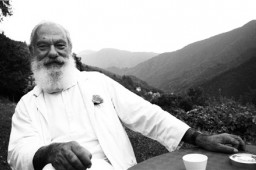Biography
1. Personal Details
Born at Cerreto Sannita (Province of Benevento) on 4 December 1936, resident in Milan.
2. Studies, research and teaching
After graduating with a first-class honours in law from the Università Cattolica (Milan) in 1958, he subsequently focused on the study of social sciences applied to management. He was an assistant lecturer and then lecturer in organisational behaviour at the CUOA (Centro Universitario per l’Organizzazione Aziendale), Padua, in the 1960s. He was professor of the Sociology of Organisations in the Faculty of Political Sciences at the Università Cattolica from 1986 to 2010. He has systematically conducted social research activities in contemporary organisations, thus contributing to the creation and development of 'organisational aesthetics' as a distinct field of research in organisation studies. He has published many essays and books in Italian and English on these themes (see the Publications section).
3. Professional experience
His professional experience can be divided into four distinct stages.
1. From 1961 to 1970 he devoted his energies to research, training managers and management consultancy, mainly in consulting firms (and especially Pietro Gennaro & Associati and the Boston Consulting Group).
2. From 1970 to 1977 he worked in companies with direct managerial responsibilities: from 1970 to 1974 he was director of the UPIM chain stores (16,000 employees and 250 sales points), part of the Rinascente group and, from 1974 to 1977, he was joint general manager of an industrial conglomerate.
3. In 1977 he was appointed Director General of the Istituto di Studi Direzionali (ISTUD; a management studies institute). This position enabled him to combine his intellectual and scientific interests with hands-on management. As head of the ISTUD until 2004, he ensured that the institute continued to have a independent economic/financial status, allowing it at the same time to pursue fully its role as a cultural institution. In those years the ISTUD made a significant contribution to scientific thinking on management and organisations as well as building up an important network of relations in the Italian and international scientific community.
4. In January 2002 he was made Secretary-General of the Fondazione Giorgio Cini in Venice. His most significant achievements at the Foundation include: a) the 'return' of Paolo Veronese's Wedding at Cana to Palladio's refectory in the former Benedictine monastery of San Giorgio; b) the installation of a new art history library, designed by Michele De Lucchi, in the monastery dormitory; c) the creation of the Vittore Branca International Center for the Study of Italian Culture with an annexed residence constructed in the grounds on the island – the Center offers young researchers and senior scholars the opportunity to stay and study on San Giorgio in a setting conducive to reflection and multidisciplinary exchanges; d) the creation of the Borges Labyrinth, at the exit from the second cloister in the monastery, designed by architect Randoll Coate; e) the creation in the north-east area of the island (Orti di San Giorgio) of a series of spaces to be used to stage exhibitions, concerts, plays, etc.; f) the launch of a series of new cultural projects and notably the Dialoghi di San Giorgio, yearly meetings encouraging exchanges between experts from different disciplines and professions on issues of great political, social and cultural importance. The most recent and relevant achievement is the transformation of the old 'squero' (a small shipyard existing on the island) in a modern concert hall.


